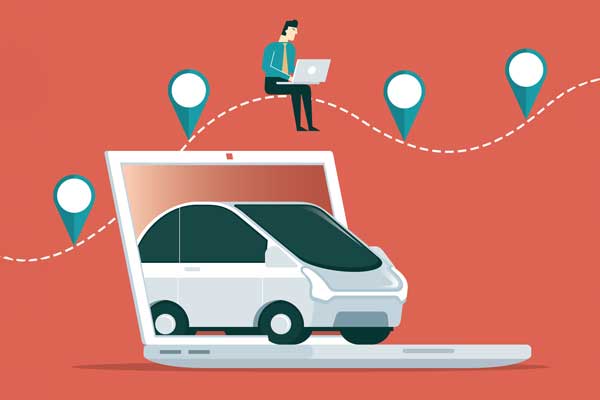A Dealer’s Transition to GA4: Preparing Now

Article Highlights:
- Know the game plan of your industry partners.
- Try to be proactive and get ahead of that July 1st deadline.
We’ve all heard the news—Google is sunsetting Universal Analytics (UA) for the reign of a new tool, Google Analytics 4 (GA4).
Whether your dealership has viewed this transition as something to figure out another time, or you’ve been diligently planning a migration strategy for months, the day is quickly approaching when Universal Analytics will stop processing new hits: July 1st, 2023.
As founding members in the Automotive Standards Council for GA4, we have some helpful information to share with your dealership to make this transition smooth and positively impactful for your business.
Quick Overview
While it’s easy to think of GA4 like a sort of updated version of Universal Analytics, the two are quite different. Before we dive too deep into how your dealership can transition smoothly, it’s important to understand what exactly those differences are:
Event-Focused—GA4 helps your dealership track events like clicks on your CTA buttons or downloads of a resource. This is a big change from UA, which tracks user activity based on their sessions.
Cross-device Capable—In recent years, many people are completing parts of the buying process on devices like phones, tablets, watches, and more. Simply put, GA4 is more equipped to follow an individual’s buying behavior across all devices, whereas UA was built to keep primarily desktop traffic in mind.
Privacy Proof—GA4 is also better prepared for the day Google finally phases out the use of third-party cookies. UA relies on these cookies a bit more.
If you want to know more about the differences between the two platforms, Google offers an entire article that details the changes you’ll notice. Now, if you’re looking for a seamless transition between the two tools and want to know a few ways to get more comfortable using GA4, read on.
Deepen the Conversation
Your dealership is impacted by a variety of marketing business partners and vendors, each of which has their own way of operating. It’s important for your dealership to have a clear idea of what you should expect from each one during this transitional period.
It would be worth having a discussion with your partners if you are unable to answer questions such as:
- When does your partner plan to switch to using GA4 (if they haven’t already)?
- Does your partner anticipate any discrepancies in reporting as a result of the transition?
- Are there any actions that your dealership needs to perform for a smooth transition?
- Have your partners considered any standards set by automotive councils for best practices in tracking within GA4 so that you can compare all activities in a similar fashion for consistent ROI measurement?
Knowing the game plan of your industry partners is a great way to ensure that your dealership’s analytics are all migrated over to GA4 in a timely matter, and that you don’t end up with gaps in your reporting from a hasty transition.
Quick Tip: Work with your vendors to set up event tracking to ensure you are collecting valuable information on your website users. Be sure to mark the relevant events as “Conversions”, which have basically replaced “Goals” from Universal Analytics.
Measure Your Success
There’s a variety of metrics that your dealership monitors, and transitional periods are a great time to run a quick assessment to ask yourself if you’re really achieving the results that you desire (or if you’re even looking in the right places for it).
What are your dealership’s main goals, and can you quantify your progress towards achieving them? If not, is there a metric that you can start measuring (or simply put more focus on) that would change that? As you’re learning how to fully utilize GA4, having the answers to these kinds of questions can help you pick what functions and capabilities you need to prioritize first.
Quick Tip: Make sure Enhanced Measurement is turned on when you create your data stream. It should be a default setting, but it can be used to track some basic events like page views and scrolls from the get-go.
Practice Makes Perfect
There can be a lot of moving parts connected to your analytics page—website pages, apps, social profiles, advertising accounts, etc. Taming all of these and setting up an analytics platform that functions the best way for your dealership can take some time.
If your dealership hasn’t transitioned to using GA4 already, try to be proactive and get ahead of that July 1st deadline. This will give you some wiggle room to troubleshoot any problems that may arise, and be able to react accordingly. Run a few tests to ensure that your data is processing properly and you’re gathering all the reporting you wanted.
In a similar way, there’s more to do even after you’ve migrated your data to GA4. Think about how long it took for your dealership to perfectly optimize your UA account to your needs and preferences. Odds are, it didn’t happen immediately, but gradually, as you learned more about what works and what doesn’t work for you. As you begin to get comfortable using a new analytics platform, don’t be afraid to play around with different setups to discover what works best for your dealership.
Quick Tip: Link your Google Ads account to GA4 as soon as possible to start collecting data in the “Advertising” tab of GA4. This tab has a lot of interesting insights about the user journey and how that translates into conversions—all of which can be incredibly useful to you.
Change can be nerve-racking, but the right preparation can turn that anxious energy into positive anticipation. While we still have a few months before Universal Analytics says its final goodbye, preparing your dealership now for that transition can make the switch to GA4 a lot easier (and maybe even fun).
Related Articles:

Harvesting Profits: Autumn Opportunities in Your Service Drive
As leaves begin to fall and jack-o’-lanterns light up porches, your service drive faces its own set of tricks and treats.

Maximizing Targeted SEO: Putting Consumer Needs in the Driver’s Seat
This article was written by Kenna Smith, a marketing communications intern. Today, SEO is more than a buzzword; it’s a game-changer. Businesses have been working…

Texting Tips: 5 Steps to Better Messaging
Fine tune your texting skills to send an impactful message every time.

Maximizing Your Marketing Potential with QR Codes
Nearly 89 million US smartphone users scanned a QR code with their mobile devices in 2022 – a number predicted to reach more than 100…















